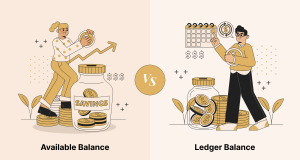Suppose you are attending a busy investor conference and you have come across two interesting pitches. The first one is an AI startup that showcases how they can leverage blockchain-powered neural networks to address many common bottlenecks in the healthcare industry. And the second is a century-old cement company with steady margins and a 5% dividend yield. Both claim to be undervalued. How do you decide which is the golden ticket and which is fool’s gold?
This is where Discounted Cash Flow (DCF) Valuation shines, not as a magic wand, but as a disciplined framework to tune out the noise and focus on what actually creates value: cold, hard cash. Let us now go deeper into the layers of this financial valuation method and try to explain the best ways to deal with a multitude of assumptions and biases that creep into business valuation and investment decisions.
Why DCF Matters More Than Ever Before?
Let’s start from the example of a meteoric rise of a company called GameStop, whose stock price in 2021 shot from $20 to $483 within just weeks. Tesla traded at 1,000 times earnings. Bitcoin hit $69,000. These aren’t anomalies, they’re reminders that markets often value companies like abstract art. They value often emotionally, irrationally, and with wild volatility.
DCF cuts through this chaos. It answers the only question that matters: “How much cash will this business generate for its owners, and what’s that worth today?” Unlike P/E ratios or revenue multiples, snapshots of the past, DCF forces you to stare into the future. It’s the difference between buying a stock because it’s “trending on Reddit” and investing because you’ve modeled its cash-generating DNA.
DCF is only as good as its inputs. Overestimate growth by 2%, and your valuation could double. If you dare to underestimate the interest rates, you can miss the near-future market crash. It often works like a two-way blade, great when used by experts and brutal in the inexperienced hands.
Understanding DCF through the Pillars of Financial Forensics
The first pillar is forecasting cash flows that requires seeing around every nook and corner. We all know that free Cash Flow (FCF) works like the blood circulation in the body of a business. For a SaaS company, it’s subscription revenue minus server costs and sales teams. For a factory, it’s profits after replacing rusting machinery. Forecasting FCF is part science and part storytelling.
Here we explain the math with an example.
EcoBrew, a craft beer company expanding into hard seltzers.
- Year 1: $2M FCF (current operations)
- Year 2: $3M (launching seltzers in 5 states)
- Year 3: $4.5M (national distribution, economies of scale)
But here’s where analysts often go wrong. It can be over-optimism or assuming 50% growth forever. It can also be neglecting cycles such as recession that can easily crush discretionary spending on seltzers. Finally it can be ignoring reinvestment that involves cash outflow. This is where optimism should be balanced by taking industry benchmarks into consideration. For example, beverage companies rarely grow at 20% annually.
The second pillar is the discount rate or the accumulated risk factor over days. Money today is worth more than money tomorrow. But how much more? That’s the discount rate, a blend of what debt and equity investors demand.
Pillar three is the terminal value. Most companies aren’t liquidated after 5 years. Terminal value (TV) captures cash flows into infinity.
Landmine Alert: TV often comprises 70%+ of DCF value. A 1% change in growth rate can swing TV by 30%. Always sanity-check against real-world acquisitions.
Let’s build EcoBrew’s DCF:
| Year | FCF ($M) | Discount Factor @ 8.3% | Present Value ($M) |
| 1 | 2.0 | 0.923 | 1.85 |
| 2 | 3.0 | 0.852 | 2.56 |
| 3 | 4.5 | 0.786 | 3.54 |
| 4 | 5.5 | 0.725 | 3.99 |
| 5 | 6.0 | 0.669 | 4.01 |
| TV | 110.3 | 0.669 | 73.76 |
Total Value = $89.7M
Suppose EcoBrew, the craft beer company we have picked up for example has 10M shares. The intrinsic value then will be $8.97/share. Now in case the share is trading at $6, you are on the safe side and you can be at risk if it is trading at $9 or more.
Don’t Shy Away from the Dark Side of DCF
Such so-called full-proof models also lie. There are countless examples where DCF assumed a whopping 50% or more annual growth rate for a company and within a year the company became bankrupt. Here are some reasons for such gross debacles.
- Garbage Assumptions: Overestimating TAM (Total Addressable Market). Not every pet owner will buy online.
- Black Days: COVID, regulations, or a TikTok trend tanking seltzer sales.
- Interest Rate Whiplash: If Fed hikes rates, WACC jumps, and DCF value craters.
How to Leverage DCF Like An Expert: Useful Tips
To make the maximum from the DCF model, you need to be more meticulous in each and every step. Here are some useful tips.
- Scenario Analysis: Make sure you run bull/base/bear cases for tracking the varying intrinsic value. For the EcoBrew brand, the figures are like 12% growth, $15/share in a bullish market and 0% growth and $4/share in a bearish situation.
- Keeping Safety Margin at 50%: Many experts prefer buying at 50% of DCF value to enjoy the safety.
- Stay on the Conservative Side: If the competitors are trading at 10 times of EBITDA and your DCF predicts it 20 times, you should not believe it readily and remain cautious.
- Update All the Time: Leveraging DCF is far from a one-time task. You need to revise often, especially with new data.
Don’t Forget the Investor’s Toolbox
DCF is foundational, but it is not the end of the world for investors. Your standard toolbox remains and pair DCF with tools like the following:
- Comparables Analysis: How does EcoBrew’s P/E compare to Boston Beer?
- Precedent Transactions: Did Heineken pay 12x EBITDA for craft breweries?
- Liquidation Value: What if EcoBrew sold its kegs and trademarks today?
The Bottom Line
Finally, you must use DCF as your financial compass to play safe as an investor. Thanks to DCF, you can get a strong foothold in the complex world of financial dependencies and relations that shape market outcomes. The best thing about DCF is that it helps you do away with biases and get rid of wild assumptions. DCF is a great wardstick to get closer to reality while investing.



